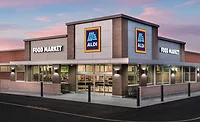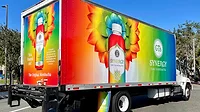Out-of-stocks remain costly for retailers
IRI offers AI solution to recapture lost dollars
Preceding last year’s Super Bowl, Kraft Heinz made headlines when the food and beverage manufacturer said it planned to give employees the day off after the big event. This news came as mainstream media outlets calculated the costs on employers due to truant workers. The impact of this much-watched game on the Monday workforce continued once again this year; however, worker presence and productivity following major events are not the only thing impacting the U.S. economy as of late.
Also placing a drag on the market occurs when consumers are faced with out-of-stock products during their brick-and-mortar shopping experience. According to Information Resources Inc. (IRI), out-of-stock products cost U.S. retailers approximately $47.4 billion each year. Anecdotally, I can say that when you are shopping with a toddler who would rather be making a pink pumpkin out of Play-Doh instead of at the grocery store, being faced with out-of-stock necessities can be quite deflating and seeking a comparable alternative is not always a luxury when factoring in nap times or other toddler triggers. Although not as public as a toddler meltdown, retailers also are dealing with their own disappointment when losing a potential sale because of out-of-stocks.
Noting the complexities of the supply chain, inventory costs and in-store executive challenges, IRI highlights that retailers remain challenged when attempting to forecast, order and merchandise consumer packaged goods. However, in a recent Point of View titled “On-Shelf Availability: Fueling Profitability, Customer Loyalty and Topline Sales Growth,” the market research firm details how technology can serve as a solution to the out-of-stock challenges of today’s retailers.
As an alternative to manual shelf audits, the firm developed the IRI On-Shelf Availability Optimizer, which is powered by artificial intelligence and machine-learning technology, it says.
“Retailers that can capitalize on the vast technological and data science advances to drive sales growth will be winners in a competitive marketplace where every dollar counts,” said Prakash Tilwani, executive vice president of supply chain and media solutions at IRI, in a statement. “The On-Shelf Availability Optimizer solution ensures that at the critical point of purchase, retailers are in position to provide excellent customer service, build loyalty and capture value.”
By integrating data sets that track products across the supply chain and in stores, the On-Shelf Availability Optimizer creates near-real-time insights and then alerts in-store employees in near-real time, IRI says.
The market research firm even conducted a case with a major grocery store chain, which found that the IRI On-Shelf Availability Optimizer solution alerted in-store employees to an average of 6,000 inventory defects a day across 700-plus stores, it states. The retailer was able to recapture an average of $68 in sales with each alert, which amounted to tens of millions of dollars in just a few months, IRI adds.
As more consumers migrate to eCommerce grocery shopping, tools that can ensure stocked shelves could become more valuable as the consumer is not there to easily adjust a purchase pattern.
Looking for a reprint of this article?
From high-res PDFs to custom plaques, order your copy today!








